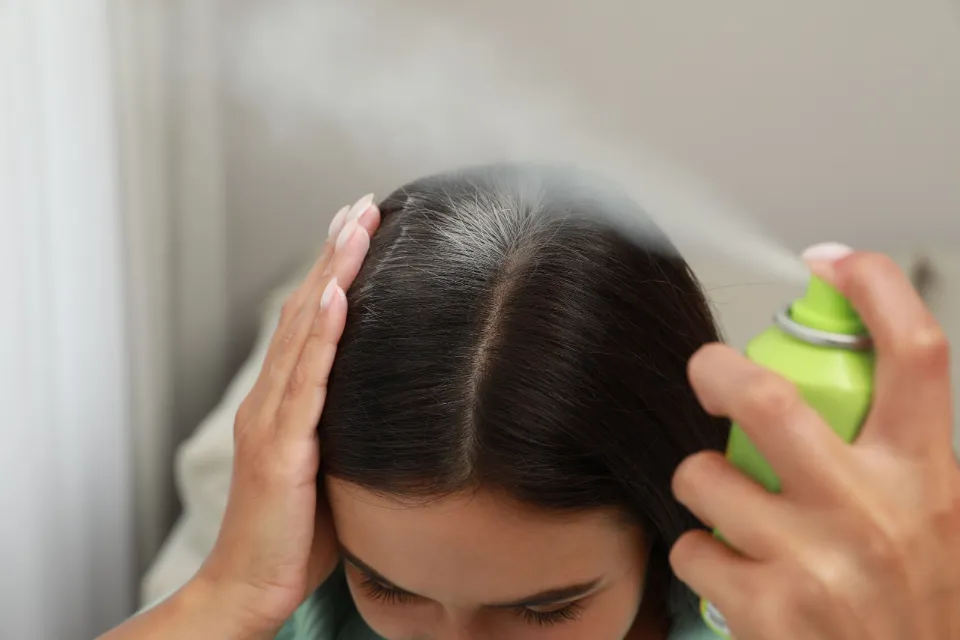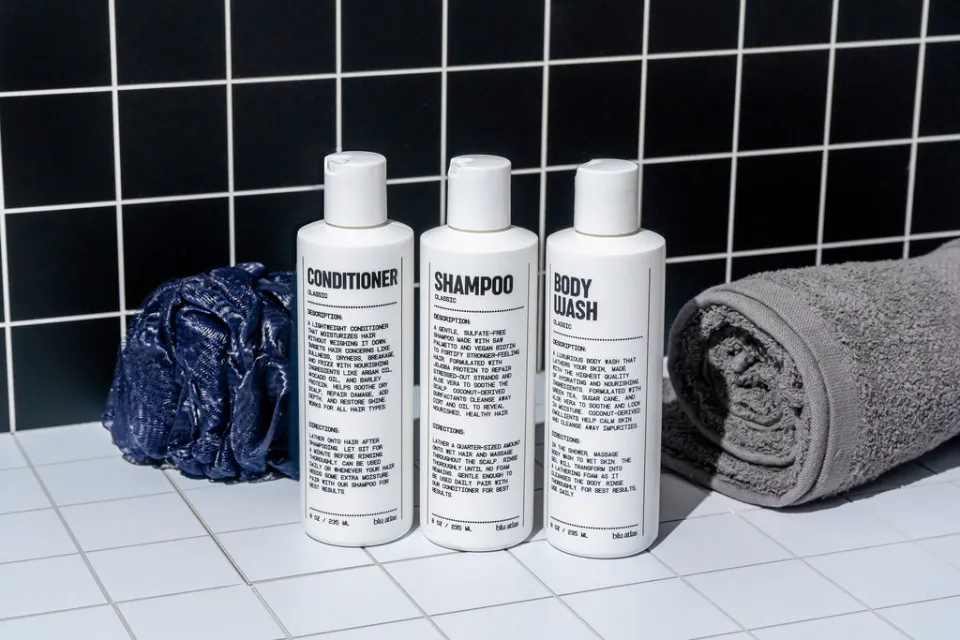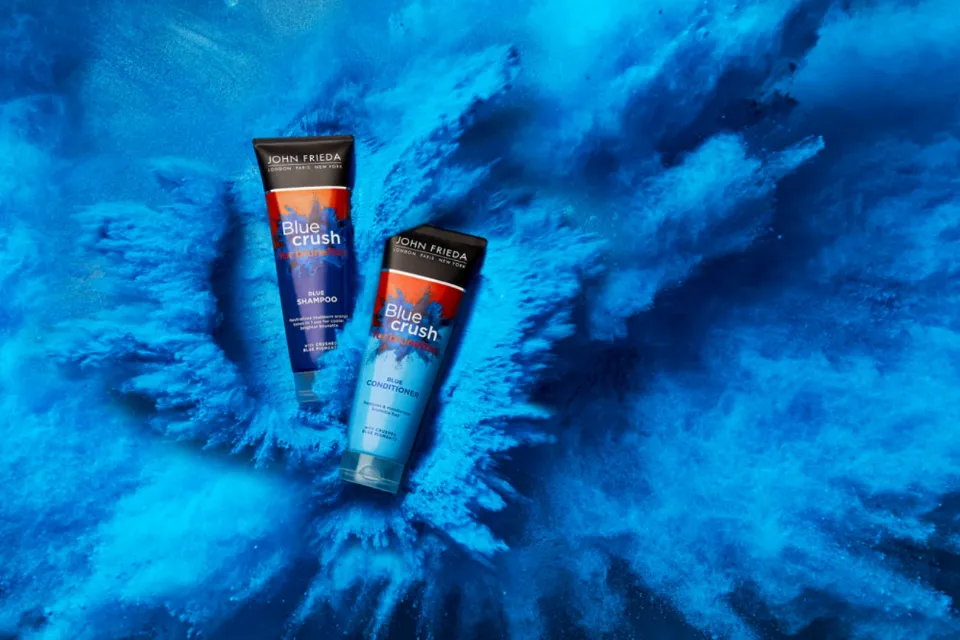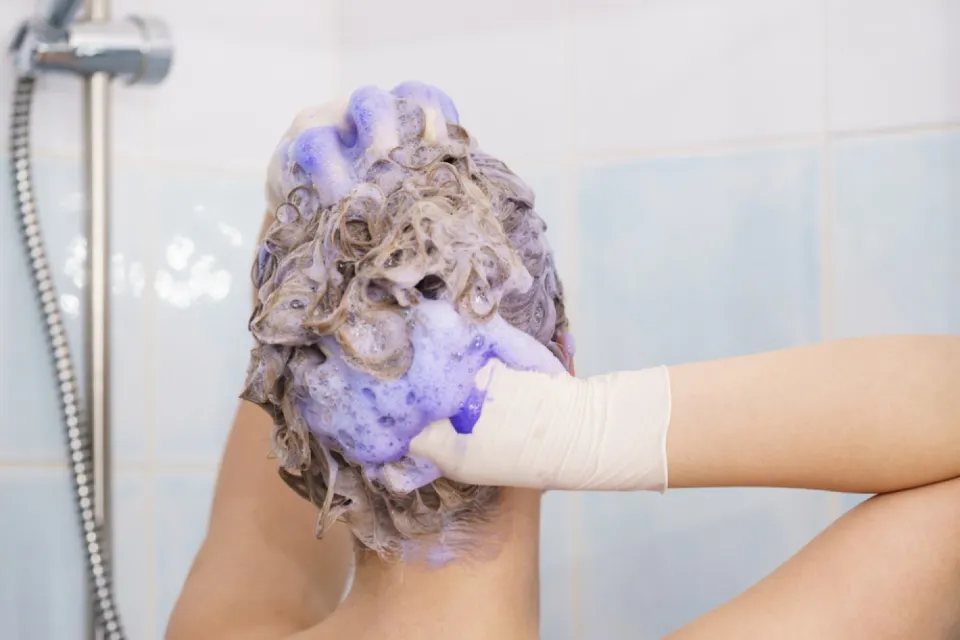Dry shampoo is beneficial for all hair types and textures, but those with oily scalps will find it particularly helpful. But do you know what is in dry shampoo exactly?
Some common ingredients include cornstarch, kaolin, and denatured alcohol.
Dry Shampoo is truly a time saver but there’s a few problems with conventional dry shampoo so if that’s what you’re using, keep on reading.
What is Dry Shampoo?
The name may be a little deceptive. Although it isn’t really shampoo, it still has useful properties. Essentially dry shampoo is a starch-based hair product that soaks up oil, grease and sweat.
The name comes from the fact that it is typically applied without using water or rinsing and comes in the form of a powder or aerosol spray.
Read More: How Does Dry Shampoo Work?
What is in Dry Shampoo?
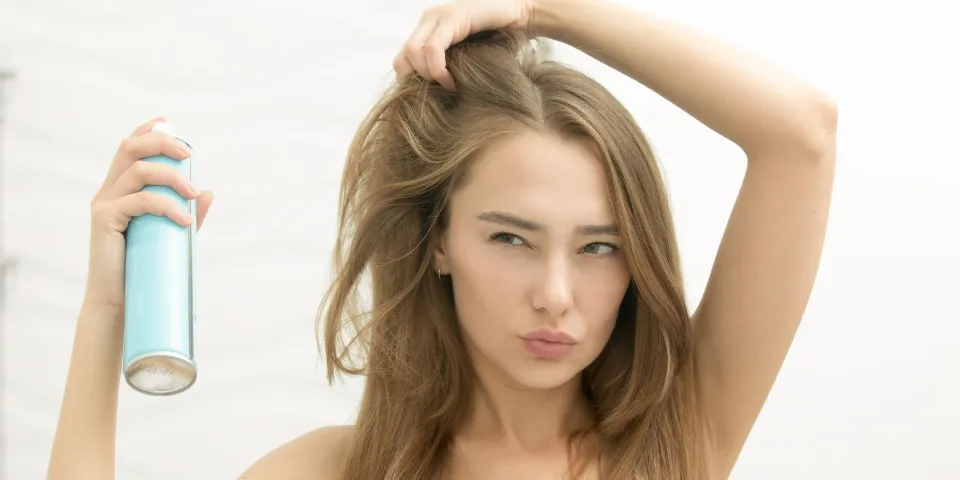
So what is dry shampoo made of? Here are some common ingredients in dry shampoo.
Cornstarch
Sebum, a mixture of lipids secreted by your scalp, causes your hair to become greasy after a few days without a shower.
Through weak electric interactions known as van der Waals forces, white, powdery cornstarch is able to attach to the fatty-acid chains in sebum.
Kaolin
This soft clay, which has been extracted for centuries from the Kao-ling hill in southeast China, absorbs grease and hides the shine of unwashed hair. It coats hair strands with hydrous aluminum silicates, which lessen reflectivity and produce a matte appearance.
The US military has switched to QuickClot Combat Gauze, a surgical bandage impregnated with kaolin, which uses the substance in a less overt manner. The negatively charged aluminosilicate nanoparticles activate the blood-clotting proteins, which create a barrier between the flesh and the atmosphere.
You Might Also Like: Is Dry Shampoo Bad for Your Hair?
Laminaria Saccharina Extract
Laminaria sticks, which are made from a particular type of brown algae, are sometimes inserted into the cervix by obstetricians to start labor; they absorb moisture and expand, which helps the cervix dilate. Additionally, brown algae functions well as a sebum sponge.
To extract this ingredient, suppliers farm the algae, chop it up, and treat it with a mixture of water, glycerin, and other ingredients they wouldn’t reveal.
Magnesium Stearate
This anti-caking agent coats the starch molecules’ surfaces to prevent them from clumping, which is one of starch’s favorite pastimes.
Bathtub rings are also caused by magnesium stearate; the waxy solid that you have to scrub out of your tub is created when ions from sodium stearate in soap and magnesium and calcium in water swap places in the water.
Denatured Alcohol
Usually methanol is added to ethanol to create a toxic, flammable mixture that works wonders as a cornstarch and kaolin solvent.
When dispensed, the liquid alcohol suspends solids without dissolving them and transports the oil-absorbing particles outside of the bottle.
After hitting the hair roots, it quickly evaporates and absorbs body heat, creating a cooling effect that calms an itchy, dirty scalp.
Liquefied Petroleum Gas
A propellant is used to force chemicals out of the can and nebulize them into a fine mist in spray-on dry shampoo, which is what most people choose.
Chlorofluorocarbons (CFCs) were used in aerosol cosmetics like hair spray until the late 1970s; however, the US government outlawed CFCs as soon as scientists realized the damage CFCs did to the ozone layer.
If you are considering buying dry shampoo, you can check our guide on Best Dry Shampoo.
Does Conventional Dry Shampoo Actually Clean Your Hair?
The short answer, no. Dry shampoos should not be a replacement for actual hair cleansing and clarifying with shampoo.
To get rid of extra scalp oil, shampoo cleaning is necessary for our scalps.
If you’ve been relying heavily on dry shampoo to cut down your shower time, we’d recommend only using a natural dry shampoo when you absolutely need it. You run the risk of damaging your follicles and developing dandruff if you don’t.
Read More: Does Dry Shampoo Cause Hair Loss?
Conclusion: What is in Dry Shampoo
Thankfully, there are many more natural dry shampoo options on the market today.
The benefit of using a natural dry shampoo is that you’re steering clear of those harmful chemicals and promoting healthy hair growth, shiny-looking hair and allowing your scalp to breathe.
Read More: What Can You Use as Dry Shampoo?
FAQs
What is in Dry Shampoo That Causes Cancer?
One of the ingredients, benzene, is known to cause cancer.
Is Dry Shampoo Bad for Your Hair?
Most people won’t experience any issues with infrequent use. Your hair may become more brittle if you use dry shampoo excessively.
How Does Dry Shampoo Work?
To give hair follicles a cleaner, fresher appearance, dry shampoo works by either the alcohol or starch in the product absorbing extra oil and grease.

